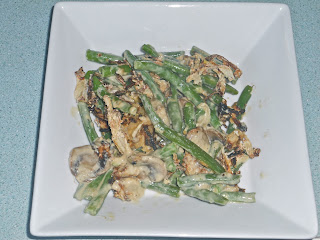Well its been a long time since I have had time to make a recipe, school just keeps getting in the way. I made this recipe a couple of weeks ago and just haven't had a chance to write about it, so here we go...

I have to admit Alton Brown can be a little over the top for me sometimes, especially when it comes to procuring raw ingredients. This is one of the rare occasions where following Alton's recommendations was surprisingly easy to follow. This is all thanks to my housemates' parents who picked a seemingly unending supply of berries for us. Frozen blueberries make a great addition to many things like cakes, muffins, oatmeal the sky is the limit really. This particular application from Good Eats 3: The Later Years, combines a coffee cake, a cobbler and fruit cake. This creation is called a buckle and may be familiar to those who have read the blog about the blackberry grunt and related cobblers. A buckle is made by adding fruit to a cake batter. It gets its name from the fact that the fruit "buckles" (as in structural integrity) the cake. If you have ever had a coffee cake with fruit, it is pretty much that. And I must not forget about my favourite part of all the streusel; a topping made of butter, sugar and spices. When it gets baked it gives a really nice crunch to the top of the cake.
I like this recipe in theory and will definitely give it another chance but I didn't have much luck baking it. It was supposed to be in the oven for 35 minutes but I had it in there for more like an hour or more. It was nowhere near done at 35 minutes so I got sucked into one of those dangerous cylces of continuously adding 10 minutes to the timer. Long story short it got overcooked and was rather dry. I still ate it and I could see how it would be really good had it not been in the oven so long. I am a little weary of our oven, it might be time to invest in an oven thermometer.
Verdict: Would make again. This time I will not over cook it so much
Blueberry Buckle
















































